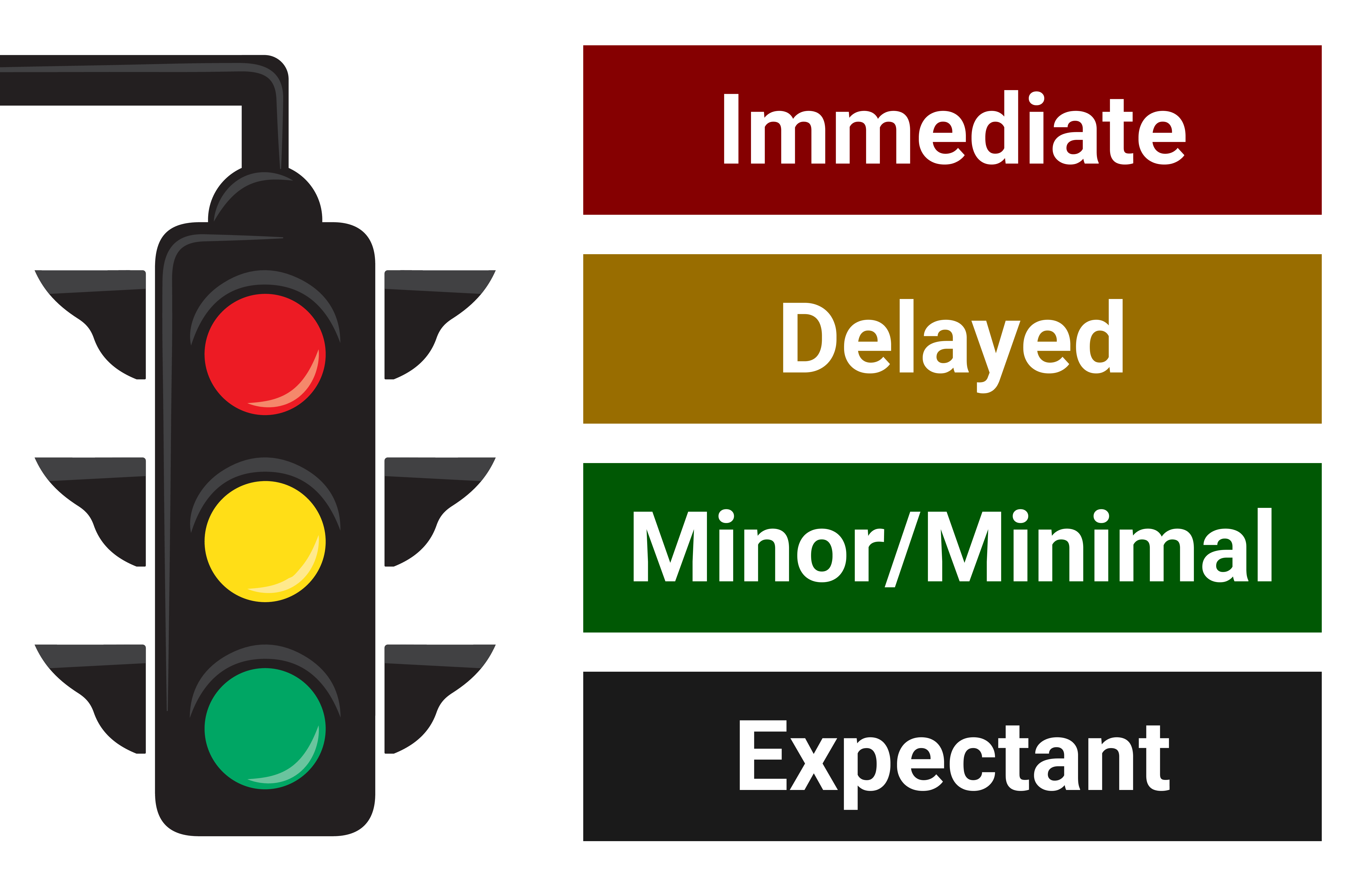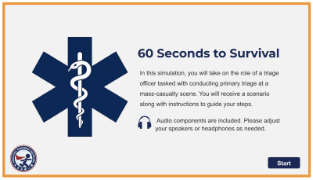Disaster Medicine Handbook: A Quick Reference
Triage
During disasters, triage decisions are made to determine who gets immediate care, who can wait, and (at times) who may not receive care at all. Triage requires rapid decision making based on very limited information.
 |
Listen to this episode of Ready. Prep. Go! Podcast with Dr. Christina Hernon as she discusses the injuries she encountered and difficult decisions she had to make when she worked the medical tent on the day of the Boston marathon bombing. |
Triage comes from a French word meaning “to sort or separate out.”
Triage is dynamic and can happen in multiple settings including pre-hospital, emergency department, and hospital settings. The same patient may be triaged multiple times as their status may change over time.
The purpose of triage is:
Do the greatest good for the greatest number of people.
The goal of triage is:
Save the most lives.
Triage Systems
There are many triage systems that exist. Some triage systems are designed for children. The triage process is NOT perfect. There is no evidence that any particular triage system for children performs better than another.
Here are some of the most popular triage systems for pediatric patients in the United States:
It is important for you to be familiar with the triage system used in your local jurisdiction.
Components of Triage Systems
Although there are multiple triage systems, many triage systems include similar components:
- Rapid assessment of breathing, circulation, and mental status.
- Breathing: Are they breathing? Are they not? If they are breathing, how fast?
- Circulation: Is there a pulse or not? What is the capillary refill time?
- Mental status: Are they alert? Do they respond to voice or pain? Are they unresponsive (Often assessed using the AVPU system: Awake, Verbal, Pain, Unresponsive)
- Color-coded triage categories
Patients are triaged into categories to help determine how patients should be prioritized.

- Red (Immediate): Life-threatening injuries that need care right away to survive.
- Yellow (Delayed): Serious injuries, but treatment can safely wait a bit.
- Green (Minor/Minimal): Walking wounded with minor injuries; lowest priority for care.
- Grey/Black (Expectant): Injuries so severe that survival is unlikely given limited resources.
- Time-limited interventions
Simple, quick actions that can make a difference without using many resources:
-
Repositioning the airway.
-
Providing a few rescue breaths.
-
Decompression of the chest.
-
Application of tourniquet to control bleeding.
-
Administering an antidote via autoinjector.
Any intervention in triage should not require a large number of people or extensive time.
 |
Triage decisions are hard to make. Take a moment to practice by checking out this case-based triage module. |
 |
Check out this fast-paced, prehospital practice triage simulation. |
Written by Dennis Ren
Last updated: 5/30/2025